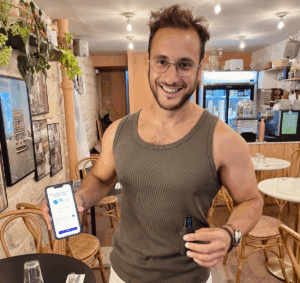Your brand's profiles on social media and directories are no longer just levers for communication or awareness. They have become major sources of information for search engines, artificial intelligence, voice assistants and new AI-first engines (Perplexity AI, ChatGPT plugins, etc.). Poorly structured or incomplete, these profiles harm your brand's visibility. Well optimized, they become a formidable lever of authority and credibility, and this is what we will see in this new chapter taken from my guide SEO for AI.
A new era of SEO is born : both for classic search engines (Google, Bing) And for conversational engines based on artificial intelligence. This AI-driven SEO, which aims to optimize content for artificial intelligence algorithms (like search engines or AI assistants like ChatGPT, Grok or Gemini), is often called AIO (Artificial Intelligence Optimization) or SEO for AI.
🧭 This article is a chapter of the guide “Optimizing your business in the age of AI”.
📘See all chapters
1. The importance of a consistent and comprehensive presence on social networks and directories
For AI, each profile or directory is a "validation point." If your name, address, phone number, and business category are consistent everywhere, you gain in algorithmic trust.
Conversely, discrepancies between your different records could cause you to lose points.
Your profiles must therefore respect the 3C rule:
- Complete (complete or almost complete),
- Consistent (same information everywhere),
- Constant (kept up to date over time).
So yes, it's a tedious job, but it's important to do it from time to time, at least every year, to check that everything is up to date everywhere and with the right information. Not only to attract and correctly inform potential prospects who could come from these directories or social networks – which is the primary intention when registering on these types of sites – but also now to inform artificial intelligence and search engines that generally judge these directories as credible sources of information.
And there is an extremely important subtlety to remember regarding the independence of brands from these platforms. Because if, for example, a hotel or restaurant does not want to appear on specialized directories like TheFork, Yelp, Deliveroo, UberEATS or Booking for ethical reasons, high commission and independence, which can indeed be understood, there is a fair balance to be found between having a presence on this type of site for reasons of existence, communication and SEO, without playing into the hands of these sites, for example by not offering any or few discounts on TheFork or Deliveroo, but we will return to this burning subject in a dedicated article.
So the idea to remember is to keep your brand information up to date on such sites at least for SEO/AIO reasons, without depending entirely on these aggregators.
2. The essential platforms to optimize
For almost any business, here are the platforms on which you must be present :
| Platform | Why it matters | A must-do |
|---|---|---|
| Google Business Profile | Primary source of local data. | Already seen in chapter 3. |
| Facebook (Business Page) | Data widely used by AI and social engines. | Please complete your information, address, and opening hours. |
| Especially for photos, events and menus (catering). | Clear bio + link to site/menu + regular posts. | |
| LinkedIn (Company Page) | Essential for BtoB, but also to give credibility to your structure. | Fill out the form, post sometimes. |
| Tripadvisor (restaurants, hotels) | Massive data source for travel and gastronomy AI. | Complete profile, up-to-date photos, review management. |
| Yelp | Still widely used in AI data sources (even in France). | Minimum attendance recommended. |
| PagesJaunes.fr (or local equivalents) | Historical reference NAP data. | Correct any errors. |
👉 Advice : Start by checking your presence on Google and Facebook, then gradually expand.
3. How to structure a profile to be AI-friendly
🔵 Company Name : No fancy variations. Keep the same name as on your site and Google.
🔵 Categories/Services : choose the categories offered (even if it means adding several when possible).
🔵 Address, telephone, website : always in the same exact format.
🔵 Description: Use 2-3 simple sentences. Clearly state your business, your strengths, and your location. Write for humans, but with algorithms in mind.
🔵 Visuals: Clear, square logo. Banners adapted to the dimensions of the platforms. Authentic, high-quality photos.
🔵 Cross-links: On your Facebook page, for example, add a link to your website. On your site, insert icons linking to your social networks.
👉 AI SEO Bonus: Try to use the same main keywords in your descriptions everywhere: this helps AI categorize your business.
4. Manage your “directory network”
Beyond the major platforms, many specialized directories (e.g., TheFork for restaurants, Treatwell for beauty salons) provide data that can be used by AI.
Recommended strategy:
- Identify the 3 to 5 major directories in your industry.
- Create or claim your listings.
- Fill them out seriously.
Check quarterly or annually to make sure your information is up to date.
👉 Tip: There are also automatic directory synchronization tools (e.g. Partoo, Uberall, Moz Local), but they are mainly suited to multi-establishment networks.
🚀 To remember
Your network of social profiles and directories is a "nervous system" for AI. Every consistent and reliable piece of information increases your chances of appearing in recommendations, local searches, or voice responses.
👇 Continue with the next chapter:
Chapter 5: Manage and boost your e-reputation
📘 Or find the complete summary of the guide “Optimizing your SEO for AI”





